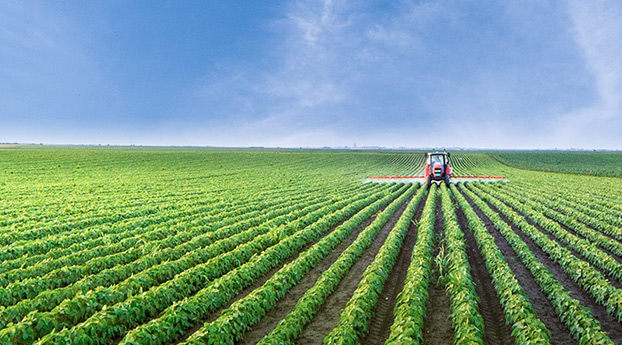The capital and law behind foreign "relaxation water"
Release time:2015-07-17 Views:295
The legislative path to "water security"
At present, there are three internationally authoritative and representative standards for drinking water quality in the world, namely the World Health Organization (WHO) "Guidelines for Drinking Water Quality", the European Union (EC) "Drinking Water Quality Directive" and the United States Environmental Protection Agency (USEPA) "National Standards for Drinking Water Quality". Drinking water standards in other countries or regions are mostly based on these three standards or important reference to formulate their own national standards.
The Guidelines for Drinking Water Quality were drafted by WHO in 1956, published in 1958, and revised and supplemented several times in 1963, 1984, 1986, 1993, and 1997. It can be said that the "Guidelines" is one of the most important international standards for drinking water quality, and has become an important basis for many countries and regions to formulate national or local standards.
European countries and Southeast Asian countries such as Japan have a long history of industrial pollution, so the clean water situation is not good. In order to deal with this polluted water source, these countries have adopted the advanced water treatment process in waterworks.
Japan's current water standards, set in 2003, include 50 items that limit mercury, antimony, boron, nitrite and fluorine. And a water quality management goal setting project, through detection to avoid water quality changes in the process of flowing through the waterway, that is, from the far water to the tap water at any time to pay attention to the quality of the water. So, in Japan, whether at home or in restaurants or parks, people can turn on the tap and drink at any time.
As early as 1974, the United States passed the Safe Drinking Water Act, which regulates public drinking water systems. The law was amended twice, in 1986 and 1996, to form a systematic project of "drinking water source protection, staff training, financing and public information to improve water systems," ensuring safe drinking water "from source to tap."
Water is the "first substance" of life in the eyes of German people, so the drinking water safety legislation is particularly important. At present, Germany is implementing the Water Resources Management Act, the sixth revision of 1996. This law has made detailed and clear provisions on the standards of water consumption, water treatment and waste water discharge for cities and enterprises.
Switzerland, one of the countries with the most abundant water resources in Europe, put forward the concept of ecological protection of water resources. Since 1876, when the Forest Act was the first environmental protection law, the Swiss Federal government has enacted nearly 40 laws on the protection of forests and water resources.
The capital and law behind "easy water"
In the United States, many people believe that drinking tap water has no effect on their health. To ensure timely and accurate results, the Environmental Protection Agency has established a procedure for testing water companies for certain contaminants. Bacteria, for example, are tested monthly or quarterly, depending on the size of the plant. Viruses and parasites should be tested once a month, and turbidity must be continuously tested. Nitrates, lead and copper are tested once a year. If a contaminant is found to exceed the maximum allowable concentration during a spot check, the user must be notified immediately and the appropriate remedial measures must be taken.
It is worth mentioning that the United States has implemented emergency plans for more than 8,000 water supply systems across the country, and has established a "three-tier emergency response system" at the federal, state and local levels. The system includes assessing and reducing the potential vulnerability of drinking water sources to terrorist attacks, developing and exercising contingency plans, developing new water security technologies for detecting and monitoring pollutants, and deterring acts that undermine water security.
But even with better regulations and testing standards, U.S. tap water has been exposed in recent years for bacteria, arsenic, uranium and other dangerous chemicals.
To cope with population growth, urbanization and increasingly stringent water quality requirements, the United States is spending more than 10 billion dollars a year on improving water quality.
Compared with the U.S., Germany, with its reputation for rigor, is assertive in its water regulation.
However, Germany also has some of the world's most expensive drinking water, averaging about €2 per cubic metre, four times the price in the US. The high water price provides sufficient funds for the construction of public drinking water in Germany, thus forming a virtuous cycle of safe drinking water in cities. In Germany's large, densely populated cities, water quality is tested every hour.
In Berlin, the capital, there is a water quality test point every 50 kilometers, and there are 180 designated user monitoring points in the city, located in public institutions such as kindergartens, homes for the elderly, and hospitals. There will be on-site water quality tests every week. Water quality testing is carried out by the water company and supervised by the regional health department. The frequency of water quality testing is related to the number of users. A small village might need only one water test a year; in a big city like Berlin, tens of thousands of tests are needed. It is known that Germany has so far established more than 20,000 water conservation areas.
In addition, to prevent qualified drinking water from being contaminated in the last few meters of transportation into the building, owners of houses are also included in the list of suppliers of water. Starting from 2012, owners of houses are required to submit technical assessments to the authorities to prove that the pipes in their houses are up to standard.
(Source: Qilu Weekly)

















